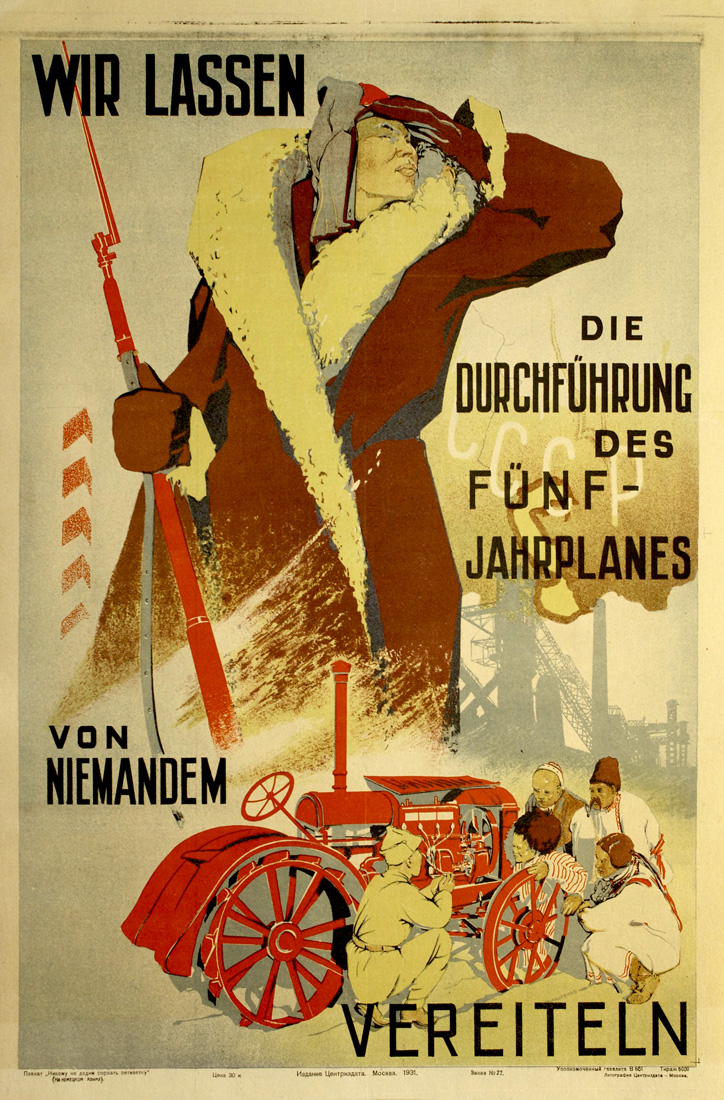
No permitiremos que se frustre el plan quinquenal.
Número de Cartel: PP 148
Información sobre el cartel: Este cartel estaba dirigido a la minoría de habla alemana que habitaba en URSS.
Tamaño: 33.4x24.4
Tipo de cartel: Litografía
Fecha de publicación: 1931
Información técnica: Order No. 27., Price 30 kopeks
Ediciones: 6,000
Número de Glavlit: V 681
En el catologo: PP 148 Economy b
Idioma: Alemán
Artista: Finogenov, Konstantin Ivanovich — Финогенов, Константин Иванович
Konstantin Ivanovich Finogenov was a noted painter, draftsman and art instructor in the USSR. He began his artistic studies in 1924 in his home town of Tsaritsyn (now, Volograd). In 1925, he joined the A.Kh.R.R. (Association of Artists of Revolutionary Russia). Finogenov furthered his artistic education at the Leningrad VKhUTEIN [Higher Art and Technical Institute] in their graphic department. After the Institute moved to Moscow, Finogenov continued his studies at the Moscow Polygraphic Institute (...
Leer más...
Imprenta: Tsentrizdat (Central Publishing House of the Peoples of the USSR) — Центриздат (Центральное издательство народов СССР)
Tsentrizdat was established in 1924 to consolidate East and West publishing divisions into one entity. With a focus on literature, political, scientific and educational information in the national languages of the USSR, it had offices throughout the Soviet republics and autonomous regions. Its printing house was located in Moscow along Shliuzovaia Naberezhnaia (Gateway Embankment, i.e. Gateway Passage). Tsentrizdat was dissolved in 1931 when the USSR centralized its printing and publishing industries.
Leer más...
Editorial: Tsentrizdat (Central Publishing House of the Peoples of the USSR) — Центриздат (Центральное издательство народов СССР)
Tsentrizdat was established in 1924 to consolidate East (Vostok ) and West (Zapad ) publishing divisions within the USSR. With a focus on literature, political, scientific and educational information all in the national languages of the USSR, Tsentrizdat had offices throughout the Soviet republics and autonomous regions. It operated its own printing sections due to the magnitude of letterforms required to develop the printed material it published in numerous languages. The publisher was dissolved in 1931 when the USSR ...
Leer más...